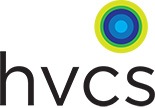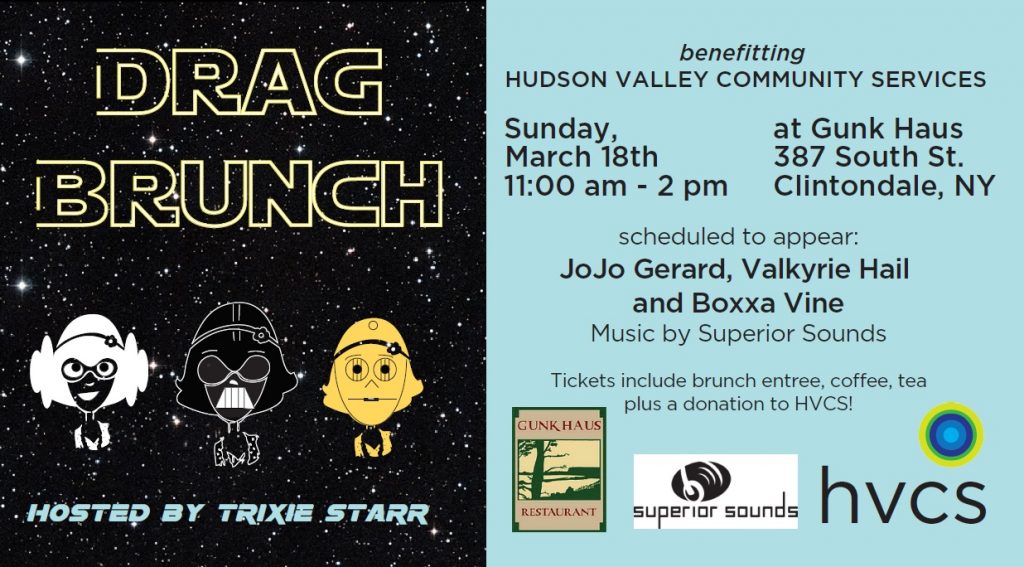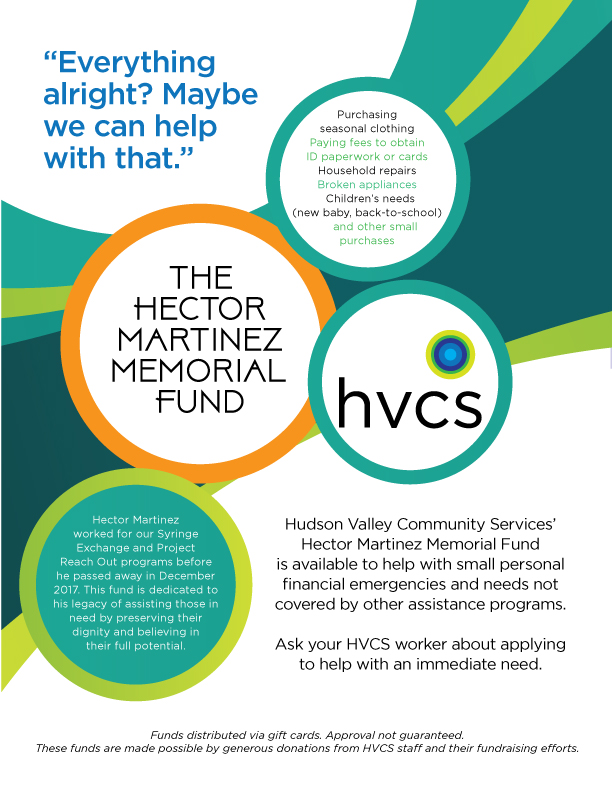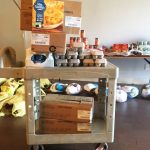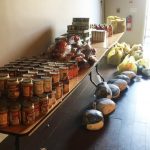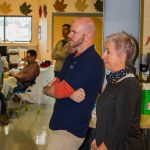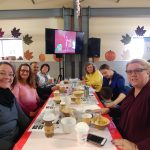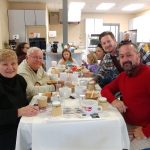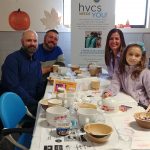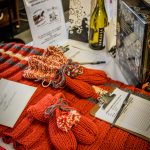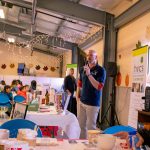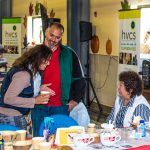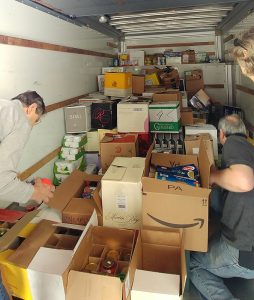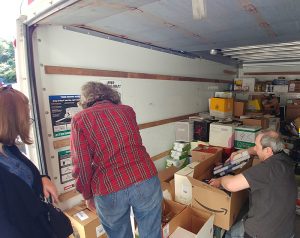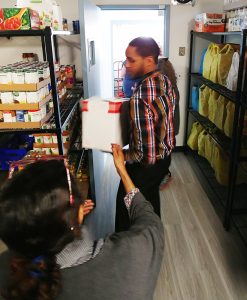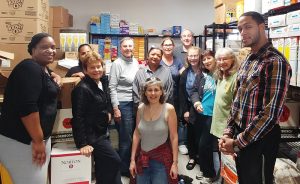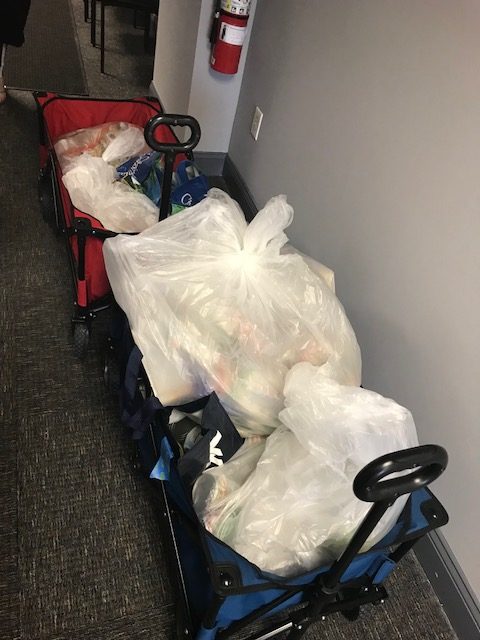
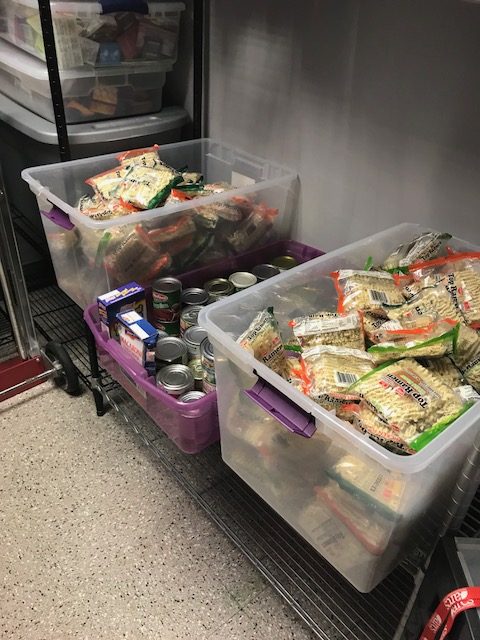
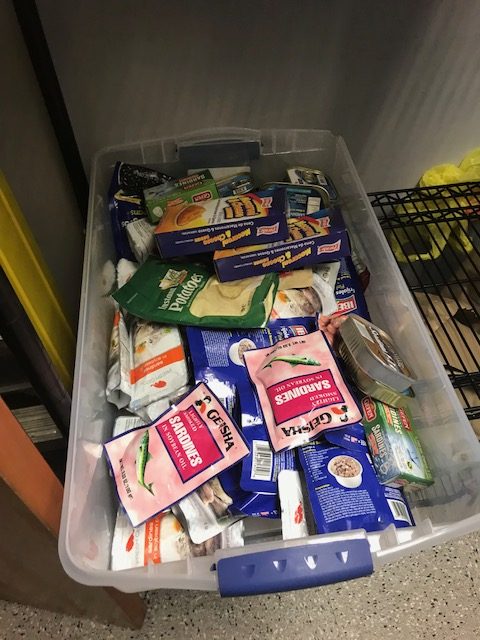
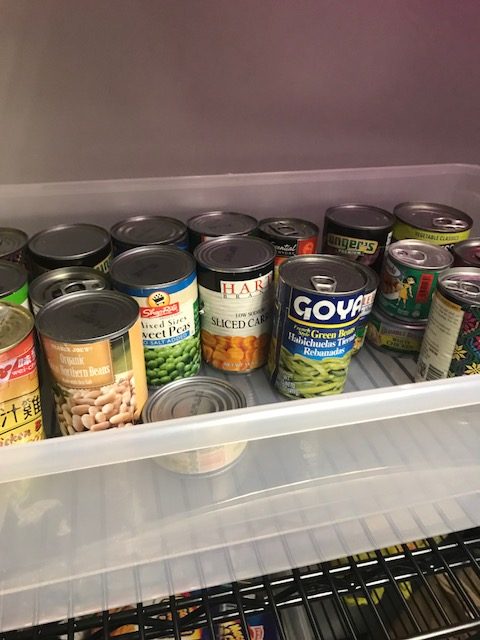
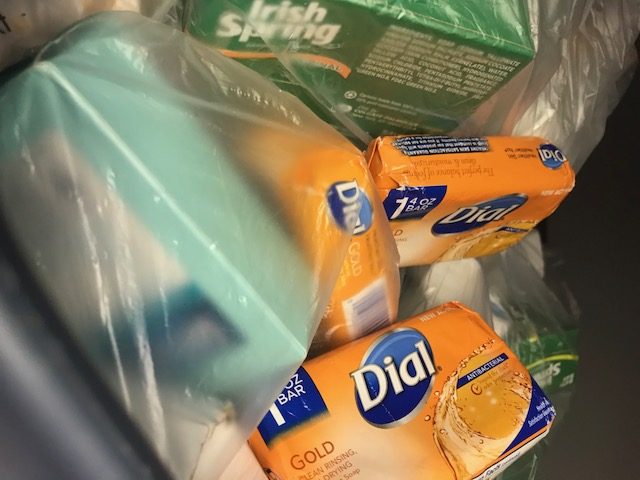 These are photos of a recent food and toiletry drive held for HVCS. The surprising part? The drive was organized by members of the Otisville Correctional Facility’s Prisoners for AIDS Counseling and Education (PACE) program. Instead of holding a walk-a-thon and asking fellow inmates to donate cash, they collected these non-perishables. They were so dedicated to their annual PACE Walk that they held it in heavy rain on May 19th! Thanks to the PACE team at Otisville–you’re inspiring!
These are photos of a recent food and toiletry drive held for HVCS. The surprising part? The drive was organized by members of the Otisville Correctional Facility’s Prisoners for AIDS Counseling and Education (PACE) program. Instead of holding a walk-a-thon and asking fellow inmates to donate cash, they collected these non-perishables. They were so dedicated to their annual PACE Walk that they held it in heavy rain on May 19th! Thanks to the PACE team at Otisville–you’re inspiring!
Posts Tagged ‘donations’
Otisville PACE Team Holds Food Drive for HVCS
Friday, June 1st, 2018Please take our Spring 2018 Donor Survey!
Friday, May 11th, 2018We want to hear from you. Please take our 2-Minute Donor Survey.
Hudson Valley Community Services would love to hear your thoughts on aspects of our fundraising efforts. As a supporter, your insight, experiences and impressions are vital as we tailor our plans for the remainder of 2018.
Drag Brunch 2018: Trixie Strikes Back
Monday, February 5th, 2018It’s time once again for delicious brunch food, mimosas, drag performers and Match Game! Liz, Dirk and the staff of Gunk Haus in Clintondale invite you to the 2018 Drag Brunch, a fundraiser for Hudson Valley Community Services. Hostess Trixie Starr is sure to sweeten the deal with the always-fun games and spicy banter. Local superstars including JoJo Gerard, Boxxa Vine and Valkyrie Hail will perform classic favorites and pop hits that will get you grooving to music by Superior Sounds. Plus, don your best gender-bending outfit and vie for the Best Audience Member Outfit prize and enter to win great prizes.
Tickets are $30 each and include choice of brunch entree, coffee, tea and juices–plus a donation to HVCS.
Get your tickets today via Eventbrite or Facebook!
HVCS Dedicates Employee-Managed Fundraisers In Memory of Hector Martinez
Monday, January 29th, 2018 HVCS lost a member of its family late last year when Hector Martinez, our Lower Hudson PRO Supervisor, passed away unexpectedly. His dedication to his work, his rapport with fellow staff members, his passion, and his trademark sense of humor are irreplaceable and will be greatly missed.
HVCS lost a member of its family late last year when Hector Martinez, our Lower Hudson PRO Supervisor, passed away unexpectedly. His dedication to his work, his rapport with fellow staff members, his passion, and his trademark sense of humor are irreplaceable and will be greatly missed.
We have decided to honor his commitment to helping our clients at their greatest hour of need by renaming what was called the Employee-Managed Fund (which we set up last year and is overseen by a committee of staff members) to The Hector Martinez Memorial Fund.
Currently the Fund is focused on helping clients who face small financial emergencies not covered by our other assistance programs. Clients, with help from their HVCS worker, can apply to receive VISA or store gift cards to help them overcome challenges, such as affording items for a new baby, school supplies, photos or other forms of identification to help with assistance applications, health-related emergencies (like first aid kits and post-operative care), etc.
The Hector Martinez Memorial Fund will also help clients who are homeless or out on the streets stay warm in winter and cool in summer by distributing seasonal care packs.
Thus far, monies in the Fund have come from employee gifts, but if you would like to make a donation in Hector’s name to support the good work of his Memorial Fund, visit our Donate page.
St. James Antiochian Orthodox Church in Hyde Park Donates Thanksgiving Dinners
Tuesday, November 21st, 2017Special thanks to St. James Antiochian Orthodox Church in Hyde Park for donating twelve full Thanksgiving dinners to some of our Health Home clients. It looks like they thought of everything! We are so grateful for your support, and for thinking of our clients at this special time of year.
#GivingTuesday is almost here!
Wednesday, November 15th, 2017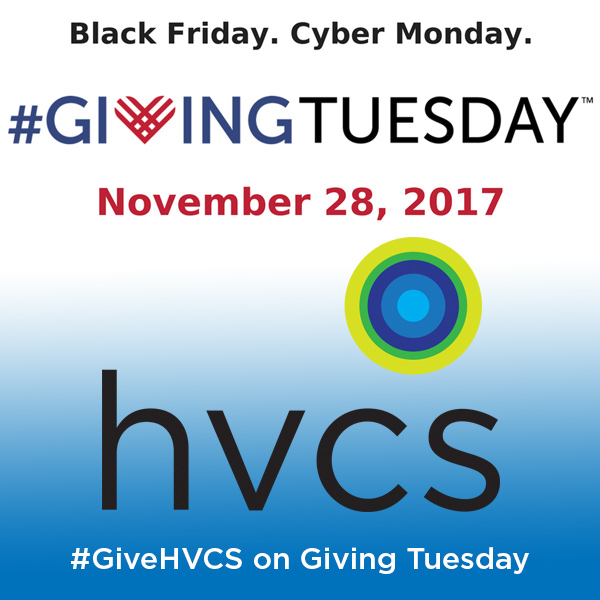 Giving Tuesday is a national day of fundraising set for the Tuesday after Thanksgiving (and after Black Friday, Small Business Saturday, and Cyber Monday). HVCS and many other charities will be using social media to ask supporters for donations to help us carry out our mission, and it ties into our overall end-of-year annual appeal.
Giving Tuesday is a national day of fundraising set for the Tuesday after Thanksgiving (and after Black Friday, Small Business Saturday, and Cyber Monday). HVCS and many other charities will be using social media to ask supporters for donations to help us carry out our mission, and it ties into our overall end-of-year annual appeal.
This year, Giving Tuesday is on November 28th.
You can help by making a donation to support HVCS’ food and nutrition programs, substance abuse programs, or HIV prevention efforts.
You can also pitch in by creating and sharing Giving Tuesday content on social media.
1) Please print out this sign;
2) Hold it up, give a big smile, and snap a pic;
3) OR, use the “GT_HVCS_Teaser” image provided at right, if you don’t want to take a selfie.
4) Next, post it on your social media profile and use the hashtag #GiveHVCS (you can also include the tag #GivingTuesday). Hashtags work on Facebook, Twitter and Instagram. It’s also great if you add in a sentence or two about your role at the agency.
5) Add in the link to our donation page: www.hudsonvalleycs.org/donate.
6) Or, if you’re on Facebook: ask people to visit the Hudson Valley Community Services page and use the Donate button. ***Facebook will MATCH all donations made to us via our Donate button on Nov 28th, up to $1,000 total for the agency!
Friends and family members are welcome to get in on the action too! The more the merrier—and the stronger our campaign.
Sample posts:
Facebook:
Today is #GivingTuesday and I’m asking you to #GiveHVCS. We improve the quality of life for thousands of Hudson Valley residents living with chronic illnesses, and your donation enables us to help more people and provide more services. Use the Donate button on @Hudson Valley Community Services and Facebook will match your donation!
Twitter:
It’s #GivingTuesday & I want you to donate to @HudsonValleyCS. Help us serve more local people w/ chronic illness. #GiveHVCS www.hudsonvalleycs.org/donate
Instagram:
Today is #GivingTuesday and I’m asking you to #GiveHVCS. We improve the quality of life for thousands of Hudson Valley residents living with chronic illnesses, and your donation enables us to help more people and provide more services. Please donate today via the profile link at @HVCSNY.
Photos From The Most Important Meal
Monday, November 6th, 2017Thanks to everyone who made our new fundraising event, The Most Important Meal, a success! Photos by Anthony Accomando and Ryan Judge.
Woodlands Community Temple Organizes Food Drive for HVCS
Monday, October 2nd, 2017Woodlands Community Temple in Greenburgh, NY organized a food drive for HVCS’ emergency food closets on Sunday, October 1st. Thanks to everyone who donated and the volunteers who brought a delivery truck full of food to our Hawthorne office!
- The congregation collected enough food to fill a delivery truck.
- Unpacking the delivery truck at HVCS’ Hawthorne food pantry.
- Naomi and Cris, from our THRIVES team, help unload and sort boxes of donated food.
- Woodlands’ food drive results fill our food pantry.
- Woodlands Community Temple congregation members pose with HVCS’ THRIVES Nutrition program staffers.
New Online Donation Methods to Support HVCS
Thursday, September 21st, 2017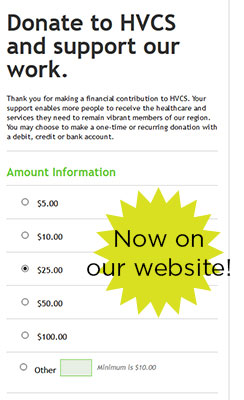 According to a recent survey of our supporters, 69% say they prefer to donate to HVCS online. We’ve responded by upgrading our website’s Donate page and by adding a new way to easily donate on Facebook.
According to a recent survey of our supporters, 69% say they prefer to donate to HVCS online. We’ve responded by upgrading our website’s Donate page and by adding a new way to easily donate on Facebook.
Now when you visit our Donate page, you’ll find a more robust online donation box where you can securely make a contribution to us, without jumping to another website or needing to enter any log-in info. And, for the first time, you can set up a recurring contribution–weekly, monthly or quarterly! A recurring donation is an easy, stress-free way to show your support for HVCS’ work throughout the Hudson Valley. (Plus, 10% of you said you’d like to make monthly donations to us.)
We’ve also been verified to receive donations directly through our Facebook page–just click on the Donate button at the top of our page. You can also easily set up your own fundraiser for us and collect donations for HVCS from your online friends. Kudos to volunteer Matt for turning his birthday into a fundraiser for us!
If you have any questions about these new methods, please contact us–we’re here to help!
Homegrown Fundraisers: You Can Be a Fundraising Superstar for HVCS!
Thursday, July 27th, 2017We’re sharing this article from The Chronicle of Philanthropy’s May issue because it’s in sync with a new initiative we’re starting here at HVCS. We’re encouraging our supporters to try their hand at a third-party fundraiser–which really means a small, personal fundraising event that you throw or do for your circle of friends and family. A third-party event can be a fantastic way to help HVCS’ clients without a ton of planning, worrying and overhead. From holding a potluck supper in your home to booking a paint-and-sip charity night to going on a hike, you can turn any event into a fundraiser with a little ingenuity. Check out our new guide to third-party events, and read on for more ideas.
Weddings. Birthday parties. Bike rides. Bake sales. Pub crawls.
More groups than ever are offering online tools to help supporters raise money through a widening variety of events, activities, or challenges that they conceive, organize, and manage themselves.
Paragliding all over the world? Why not raise money while you do it?
Giving up drinking for a month? Let’s set up a fundraising page for that.
The online tools make it easy for people to create their own pages and share them on social media or through email — creating new groups of supporters for nonprofits in the process.
Charities say they are facilitating these fundraising options to keep up with supporters’ shifting habits. Platforms like GoFundMe allow people to raise money in almost any way they want to, and nonprofits say they need to be just as flexible.
New platforms like DonorDrive and Blackbaud’s Everydayhero have allowed charities large and small to register these do-it-yourself events at low cost. For example, Everydayhero is free for nonprofits that use Blackbaud’s TeamRaiser software — which helps people raise money for charity through events organized by nonprofits — and about $1,000 for those that don’t. There’s also an administrative fee, usually around 5 percent, per transaction.
While the amounts raised usually are only a sliver of most charities’ overall contributions, grass-roots fundraising events offer big potential for acquiring new supporters. Their promise is limited only by nonprofits’ willingness and ability to help.
“It’s an emerging trend, fueled by technology and changes in how people communicate and run their lives in the digital age,” says David Hessekiel, president of the Peer-to-Peer Professional Forum, which provides resources for nonprofits that run events in which supporters raise money on behalf of nonprofit organizations.

Fast-Growing Trend
Just a decade ago, most nonprofits were cautious about liability issues related to outside supporters using logos and marketing materials in ways that might embarrass the organization, says Mr. Hessekiel.
Trailblazers included the St. Baldrick’s Foundation, which put on head-shaving events to support children’s cancer research, and Movember, which urges men to grow mustaches to raise funds for male health efforts. The St. Baldrick’s events raised $34.9 million in 2016, and Movember raised $17.2 million.
Those organizations were soon joined by other nonprofits big enough to have the staff and expertise to promote and oversee DIY events.
“For bigger charities, it’s pretty much expected now,” says Kevin Scally, director of digital marketing for Smile Train, which launched a donor platform last November with new features for its DIY fundraisers.
The technology boom has allowed smaller players to join the action in recent years using an expanding and diverse array of low-cost tools. However, the money from homegrown fundraisers doesn’t come free or without effort: Many groups devote significant staff time and marketing dollars to help supporters with their campaigns.
“There’s been a lot of disappointment” for groups that think DIY events generate easy money, says Mr. Hessekiel.
Attracting Younger Donors
Smile Train, a group that instructs doctors in how to help children in poor countries who need surgery to correct cleft lip, allows supporters to build profiles on its website that resemble social-network pages. Through the profiles, supporters can start their own fundraising campaigns and add a video, photos, and a description of their event. They can also comment on other people’s pages and share their fundraising events on Facebook, Twitter, and other social-media sites.
If the grass-roots event gets offline contributions, those can be logged into the online system to show gratitude to the donor.
So far, DIY fundraisers make up only a small percentage of the organization’s support. But Mr. Scally says it’s still vital to provide a way for Smile Train to accommodate anyone who wants to raise money. The organization hopes its DIY program will attract younger donors, he says. It seems to be doing just that; 48 percent of Smile Train’s DIY organizers are millennials, and 33 percent are from Generation X.
On the charity’s website, people can choose from a range of options, like athletic events or birthday celebrations in which guests are asked to give to Smile Train. They can also select the “get creative” option and come up with their own idea.
“It’s really important in today’s day and age to have a set of tools where people can go on and create things on their own,” Mr. Scally says. “You know how easy it is to set up a GoFundMe page. You know how easy it is to set up a Facebook profile. We tailor our tools to be similar to that type of sign-up process — where it’s quick, it’s easy, it’s fun.”
Among its DIY events posted online:
- Last year, a couple from Edison, N.J., raised $1,725 during a housewarming party.
- A yoga instructor in West End, N.C., donated $6,100 — a percentage of revenue from her class — to Smile Train.
- A couple from Saratoga Springs, N.Y., has committed to raise money every year until their infant son, who has a cleft lip, turns 18. Their goal: $175,000.
Banners and Balloons
Some organizations are asking supporters to start DIY events as part of larger campaigns.
The Alzheimer’s Association, for instance, asks people to organize their own events for its “Longest Day” campaign. Many of the events are held on the summer solstice, although people can raise money year-round. The campaigns run the gamut: rides, hikes, climbs, bowling, golfing, bridge tournaments. On June 20 last year, a supporter wrote poems on his blog from sunrise to sunset in honor of his wife, who suffers from Alzheimer’s. He raised a little more than $400.
Longest Day events raised almost $4 million in 2016 — the second-biggest peer-to-peer fundraising campaign for the nonprofit after its signature Walk to End Alzheimer’s. Longest Day is expected to raise even more this year, says Donna McCullough, the charity’s chief development officer.
Part of the reason for the campaign’s success, she says, is that supporters can access items like banners, balloons, and cups with the campaign’s logo to use in their events. The drive’s Facebook page is littered with people wearing “Longest Day” T-shirts at their individual events.
“It unites them in a common goal, and it really gives them a sense of joining the Alzheimer’s movement,” Ms. McCullough says.
Tips and Webinars
Many groups that have a DIY program provide tips and other resources for people raising money.
Water Mission, for instance, gives a DIY-fundraising tool kit to campaigns with goals of raising between $10,000 and $30,000. The clean-water charity’s kit includes customizable posters and fliers, a news-release template, and a fundraising tip sheet.
For World Vision’s Global 6K for Water drive, to be held May 6, the aid charity held regular webinars to educate people on the cause and talk about challenges and advice for hosting a six-kilometer walk on behalf of the organization. The webinars helped “create a sense of community early on,” says John Overy, director of digital marketing for World Vision, by making supporters feel like they were part of a large campaign.
Tending the Grass Roots
Many nonprofits have failed to provide enough help to DIY fundraisers to take full advantage of what they have to offer, experts say. Small groups in particular struggle to find the resources they need to make the programs successful.
For small groups that want to try peer-to-peer fundraising, however, DIY events may be a good low-cost alternative to hosting large runs or walks, says Mr. Hessekiel. Small organizations need to assess how much staff time they can devote to the program and should keep their expectations modest.
“Nobody is going to raise — other than in fluky situations — huge amounts of predictable, long-term money unless that are able to dedicate staff in order to make these programs really sing,” Mr. Hessekiel says.
Organizations with growing grass-roots programs tend to spread among several staff members the work of monitoring DIY platforms, thanking organizers, and answering their questions — or they have dedicated a full-time employee to handle most of those tasks.
Still, even large organizations say keeping up with all the events can be challenging.
“I’m a one-man shop,” says Megan Rouse, who has managed Susan G. Komen’s DIY program since last July. She says she spends more than a third of her time on the phone daily, mostly providing guidance and encouragement to organizers or trying to rouse dormant campaigns.
DIY events brought in $900,000 in Komen’s 2016 fiscal year; in fiscal 2017, which ended March 31, the breast-cancer charity raised $1.6 million. “I truly believe that is because of the customer service and building those relationships — talking to people, making sure they feel comfortable,” Ms. Rouse says.
Water Mission has tried to systematize its approach, developing what it calls a “decision matrix” that outlines what kinds of assistance each fundraiser will get from the organization.
For instance, an event with the potential to collect more than $30,000 has a staff member assigned as a contact and gets help with custom marketing materials, among other assistance.
“We only have really two people on our staff that are in that DIY and event-fundraising space, and we were running them ragged” before adopting the matrix, says Lisa Cottingham, the organization’s former director of development, who left in April to pursue consulting. “We had to come up with a way to allocate resources based on what we knew from experience and what we saw going forward.”
Marketing Boosts
For many organizations, promotional efforts are key to expanding their grass-roots campaigns. On its homepage, Smile Train links to its DIY registration page, and it promotes campaigns on its social-media accounts.
World Vision also promotes campaigns on social media and provides information about the program in its newsletters and in emails to current donors. Sometimes, Mr. Overy says, the charity’s staff battle over which program is going to be touted in which space and how often.
Those who run DIY programs need to stick up for them, he says. “You have to be an advocate and fight for marketing opportunities.”
Another major challenge has been retaining donors who give to a friend’s or loved one’s campaign but don’t organize the event themselves. The mind-set of those donors is often, “I’m helping a friend. I’m helping a cause. I’m not giving out of motivation to help the charity,” says Mr. Overy.
For now, World Vision sends major-gifts Canada fundraisers information about donors who make sizable contributions to DIY campaigns so those donors will get personal attention, he says. Smaller donors get an initial email thanking them for their gift, then are put in the same fundraising email and messaging streams that serve all one-time donors, he says.
For Ms. Rouse at Susan G. Komen, retaining those who organize events is more important. After all, they are the ones who are going to keep their friends and relatives giving.
To keep grass-roots fundraisers on board, she often calls people who have led past campaigns to ask if they are still going to participate. Sometimes she reregisters campaigns while she’s on the phone.
She sums up the message of the phone calls: “I know who you are, and I want you back.”
